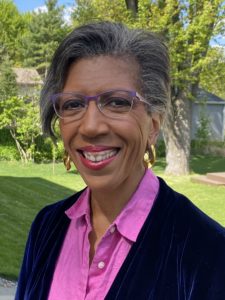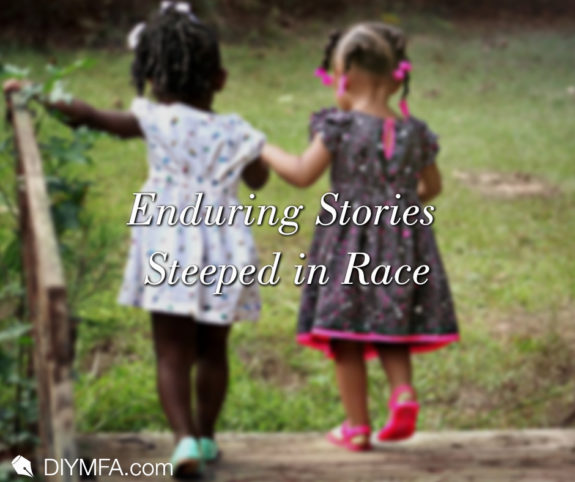In these times I hope authors continue crafting children’s and young adult books on sensitive subjects such as race. Compelling stories can penetrate young minds with staying powers that endure long beyond that first read. Early exposure to lives that differ from or connect to blossoming readers can shape their future attitudes and actions. I have retained several books from my childhood because they still speak to my older self.
Race has been a matter-of-life fact for me beginning with memories of being labeled a Negro girl in the 1950s. In 1963, when I was 8 years old, I recall accompanying my mother when she scoured New York City bookstores for literature about people like us. She curated my book collection to include tomes with black people, especially children, who transcended the chaos around them. In my teens, I learned that my mother’s experiences with race cemented her determination that my dreams would never be limited. Consistent exposure to exemplary literature and extraordinary stories referencing race subjects was an integral part of her plan.
I remain moved by three books that strengthened my self-respect and swayed career choices. Each achieves excellence in character development, world building, and plot detail—all told from points of view that spoke directly to me—young black girls under the age of thirteen who displayed resilience in complicated worlds. The three books covering different eras share common factors around race: historic truths, inequitable obstacles, and jubilant aspirations all conveyed through the eyes of young characters just as relevant today as in their respective desegregation, depression, and slavery settings.
Mary Jane by Dorothy Sterling
Mary Jane, published in 1959, captured the brutalities faced by “Negro” children desegregating southern schools. I recall one chapter titled “Heads Up, Eyes Front.” It detailed 12 year old protagonist Mary Jane’s first day heading to Wilson Junior High under a police entourage that deflected physical blows but could not divert refrains of “go back to Africa” and “pull her black curls out.” Heeding her mother’s instructions, Mary Jane held her head high and focused her eyes forward. This stance fortified her through that first day and full year of ups and downs. Mary Jane armored me as well while attending my private school and sporadically encountering questions about my belonging there or in the co-op building where I lived in the home my parents bought in the 1950s.
Daddy was a Numbers by Louise Merriwether
Published in 1970, this story recounted the life of twelve year old year old Francie growing up in New York City’s Harlem community in the 1930s. She lived with a determined family fighting the scourges of poverty. Her parents and two older brothers survived by using legal and less legal systems to make rent payments on a substandard apartment they shared with shared rats and roaches. When unbearable hunger leads her parents to reluctantly sign up for government subsidies called “relief,” her father remarks, “They don’t give you enough money to live on so you have to bootleg some kind of work, then they want you to deduct that from your relief check too.” Francie’s wide social network spanned good friends, caring adults, bullies, and molesters. Her life both differed from and mirrored aspects of my own. I always admired Francie’s perseverance and ability to persist in dreaming.
Corrie and the Yankee by Mimi Cooper Levy
This was also published in 1959. Levy visited my elementary school in the mid-1960s for an author reading. I was spellbound by Levy’s fictional tale set in the mid-1860s. It featured a young girl, two years my senior at time, living with her grandparents in slave quarters near the end of the Civil War. Ten year old Corrie stumbles on a wounded white Yankee soldier while gathering wild strawberries one afternoon. They form a bond after he shares his escape story from a rebel prison and reflects on how much Corrie reminds him of his younger sister. She tends to him in her secret, wooded hiding place until his condition spirals downward. Corrie enlists her extended family’s help to heal him and ends up guiding him through wooded forests heavily patrolled by Confederates to the safety of an underground railroad station. I remember Corrie’s charisma and courage as well as her savvy and wit in the face of constant danger. I wanted to be like Corrie.
As a child, I reveled in all these stories because the action, adventure, and plots enthralled me. As an adult, I recognized that the complete characters and complex matters intertwined around race were spark plugs for inspiring societal change. As a parent, I’ve shared my childhood books with my children desiring the same for them as my mother sought for me.
I hope today’s writers push forward with creating young, multi-dimensional characters as prime central figures in stories about race, ethnicity, and more. I urge us all to craft stories from the multiple ways people experience being part of a specific group. For example in my case there are multiple “black experiences,” yet many of us share a common experience derived from encountering overt discrimination, micro aggression, implicit bias, or hateful violence.
Writers, never doubt your power to reach today’s children and young people who are destined to become tomorrow’s adults. Those adults are positioned to keep advancing changes and dreams. Mimi Cooper Levy’s book dedication remains relevant: “To Corrie and her people whose story is not yet finished.” I invite us all to help finish Corrie’s story, and those of many others through our writing.

Stacey Parkins Millett now pursues creative writing and non-profit consulting passions after full-time work in philanthropy, health equity, and community development. Her early journalism career with CBS and PBS TV stations in Pennsylvania involved writing news stories and documentaries. She shifted gears to leadership roles in community development and grantmaking in hopes of advancing the common good but kept writing on the back burner. Stacey has run sixty marathons, practices Yoga, and relishes swing dancing. She grew up on New York City’s Lower East Side and lives between her childhood home and Asheville, North Carolina. You can find Stacey on her website, staceyparkinsmillett.com.







